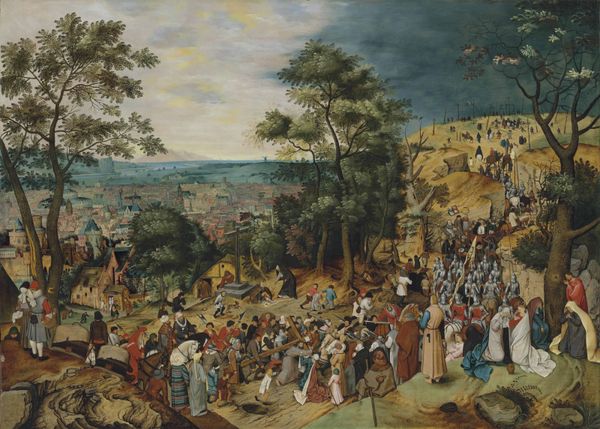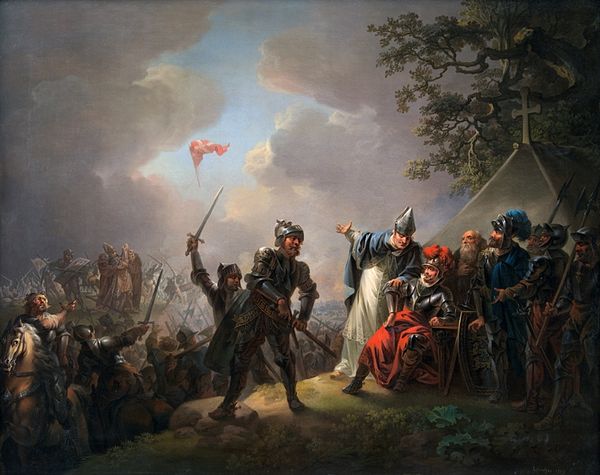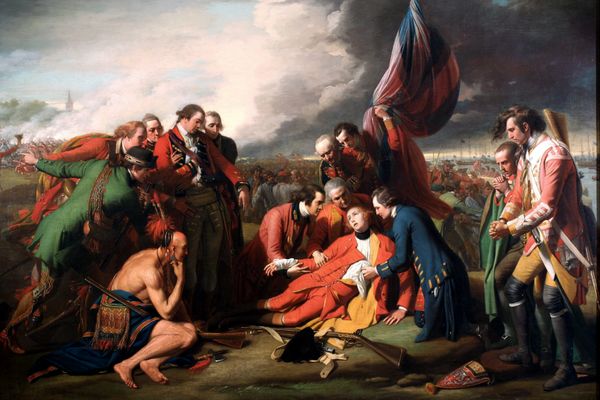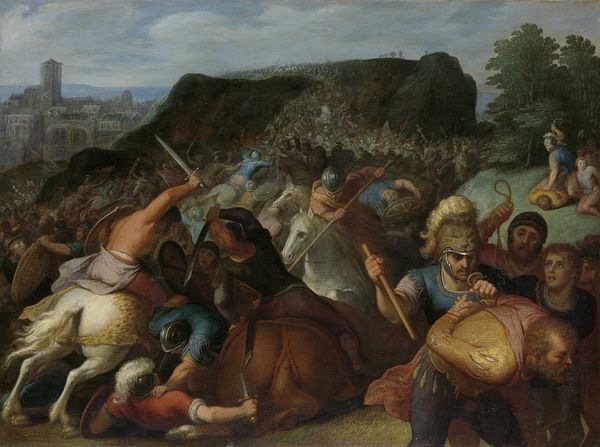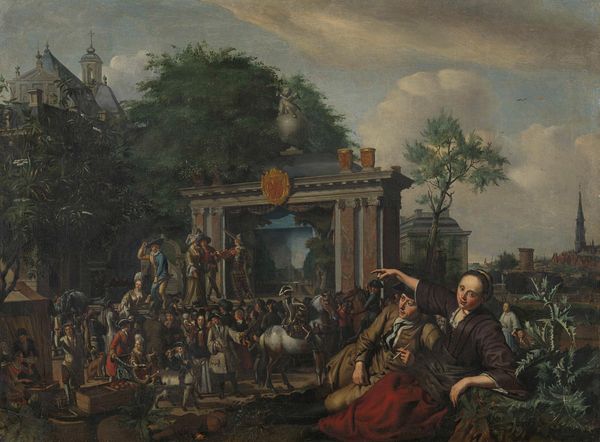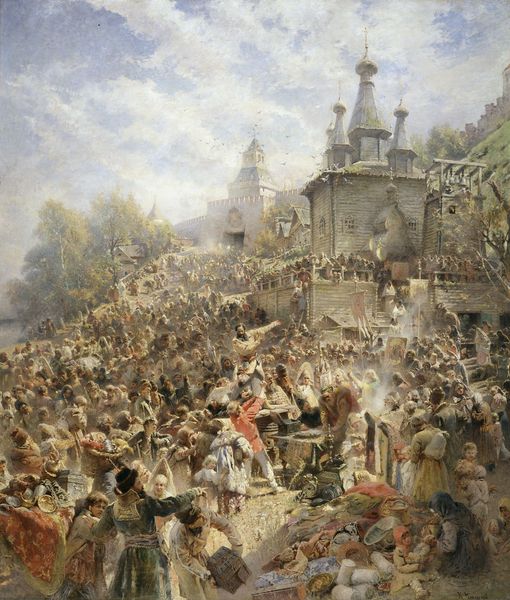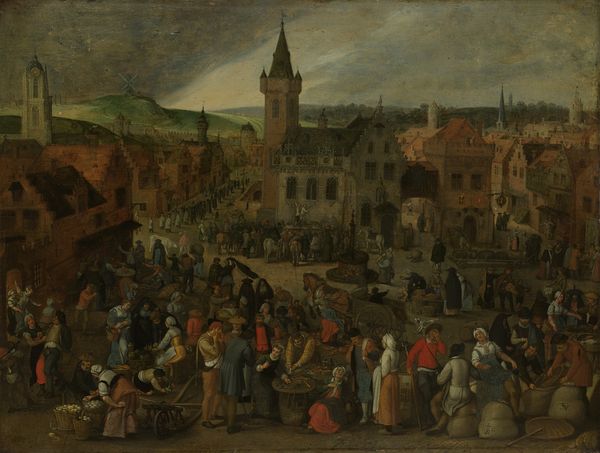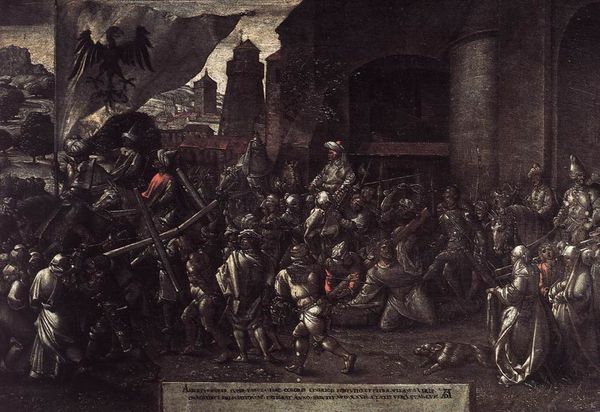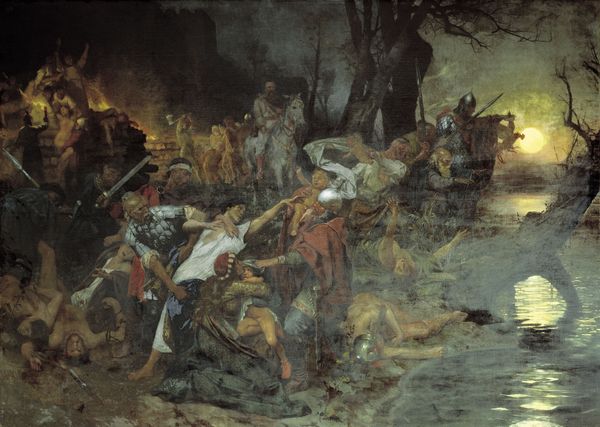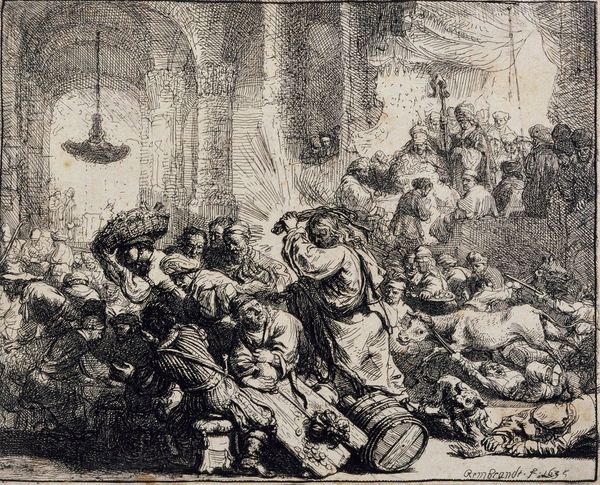
The Famished People after the Relief of the Siege of Leiden 1574 - 1629
0:00
0:00
painting, oil-paint
#
narrative-art
#
baroque
#
dutch-golden-age
#
painting
#
oil-paint
#
oil painting
#
group-portraits
#
cityscape
#
genre-painting
#
history-painting
#
realism
Dimensions: height 40 cm, width 59.5 cm, depth 8.5 cm
Copyright: Rijks Museum: Open Domain
Editor: Here we have "The Famished People after the Relief of the Siege of Leiden," painted between 1574 and 1629 by Otto van Veen, using oil paint. The sheer number of figures is overwhelming, and the palpable sense of desperation is heartbreaking. What should we be paying closer attention to here? Curator: Well, look closely at what’s *in* those people’s hands, or not in their hands. Veen’s attention to detail highlights the materiality of survival: bread, meager portions, and even bare hands reaching for what little sustenance is available. It's not just about capturing a moment in history; it's about the very *stuff* that sustains life. Editor: That makes me think about who got the bread first. Was that also based on class or gender? Curator: Exactly! Consider how the painting itself functions as a commodity, commissioned and consumed by a particular audience. Veen wasn’t just documenting; he was crafting an image that reinforced certain power dynamics. Think about the labor involved—the grinding of pigments, the weaving of canvas. Who profited from this representation of suffering, and who was left empty-handed? Editor: So, you're suggesting that the very act of painting this scene, using resources and labor, might mirror the inequalities depicted within it? Curator: Precisely. It forces us to confront the uncomfortable reality of art’s place within systems of production and consumption, especially during times of famine and war. Notice, too, the composition; the starving masses foregrounded, while the cityscape—representing wealth and power—looms in the background. Editor: That contrast really does amplify the message. It makes me reconsider the purpose and creation of history paintings in general. Curator: Indeed. By examining the materiality of art and its historical context, we gain a deeper understanding of not only the depicted event, but also the social and economic structures that shaped its representation. Editor: I now see that every element, from the canvas to the bread held, tells a story about power and resources. Curator: Yes, and it prompts us to question whose stories are told and whose are erased.
Comments
rijksmuseum over 1 year ago
⋮
When a city is surrounded by enemies, its people find themselves in a tight corner. Food is scarce and disease easily breaks out. Reasons enough for Leiden to almost surrender in 1574. But the city is liberated by the Rebel army, the relief comes in the nick of time. Swarms of famished and exhausted people await their liberators. The soldiers have brought food with them, mostly herring and white bread.
Join the conversation
Join millions of artists and users on Artera today and experience the ultimate creative platform.



